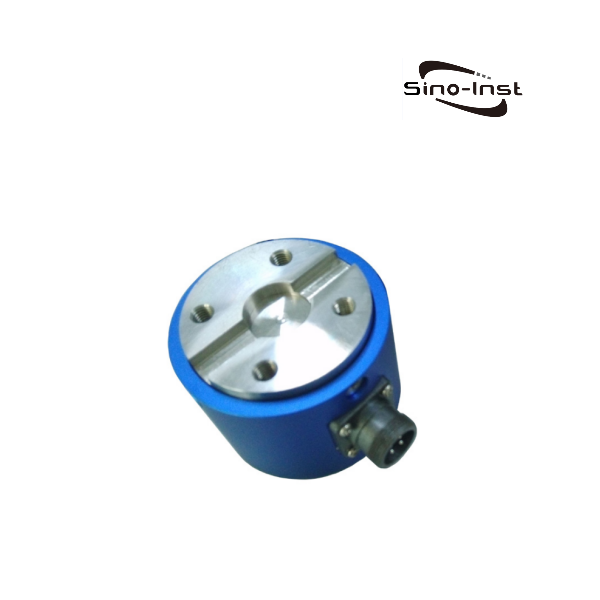Torque is a fundamental force in mechanical systems, observed in applications ranging from automobile engines to turbine blades in aircraft. This pervasive presence makes torque measurement a critical component of engineering and industrial processes. The global market for torque sensors exceeds $5 billion annually, underscoring its significance. Various technologies are available for torque measurement, each with unique advantages and limitations. This article compares four prominent torque sensor technologies: strain gauge, displacement, magnetoelastic, and Transense Surface Acoustic Wave (SAW) technology.
Strain Gauge Sensors
Strain gauge sensors are the most conventional method for measuring torque. These sensors use piezoresistive strain gauges attached to the shaft. When torque is applied, the strain changes the resistance in the Wheatstone Bridge Circuit, producing an electrical signal proportional to the torque.
| Advantages | Disadvantages |
|---|---|
| Low cost and easy to implement in test labs. | Limited frequency response (below 1 kHz). |
| Suitable for low-volume applications. | Requires slip rings or telemetry for signal acquisition, limiting RPM and system reliability. |
| Prone to electromagnetic interference and not robust in harsh environments. |
Despite its affordability, the reliance on slip rings and susceptibility to interference make strain gauge sensors less suitable for high-speed or harsh environments.
Displacement Sensors
Displacement sensors measure the torque by determining the phase difference between two toothed discs attached to opposite ends of a shaft. The relative twist angle is calculated using optical or magnetic methods, which is then converted into torque.
| Advantages | Disadvantages |
|---|---|
| Capable of handling overload without sensor damage. | Cannot measure static torque or load. |
| Requires a torsion bar, compromising mechanical stability. | |
| Temperature sensitivity and bulky mechanical setup. |
While displacement sensors provide robust overload capacity, their inability to measure static torque and bulky setup pose limitations for compact or static applications.
Magnetoelastic Sensors
Magnetoelastic sensors operate by detecting changes in magnetic permeability on a shaft's surface caused by torsional stress. Coils surrounding the shaft measure variations in induced voltage, which corresponds to the applied torque.
| Advantages | Disadvantages |
|---|---|
| More robust than strain gauges. | Accuracy is limited due to variations in magnetic properties. |
| No need for a torsion bar. | Susceptible to stray magnetic fields and temperature variations. |
| Calibration is specific to each shaft, complicating replacements. |
Magnetoelastic sensors are durable but face challenges with accuracy and susceptibility to environmental factors, making them less versatile compared to other technologies.
Transense Surface Acoustic Wave (SAW) Technology
Transense's SAW technology employs a wireless, passive, and non-contact sensing system. It consists of SAW sensing elements connected to a shaft-mounted antenna and a reader unit. The reader sends an interrogation signal, and the sensor reflects the signal back, modulated by strain and temperature.
| Advantages | Disadvantages |
|---|---|
| Completely wireless and passive installation. | Not available as an off-the-shelf product; requires custom integration. |
| Immune to electromagnetic interference and environmental noise. | Relies on proprietary Transense devices and ASICs. |
| Compact, lightweight, and suitable for high-speed applications. |
SAW technology stands out for its wireless and interference-immune design. Its ability to measure torque without torsion bars makes it ideal for advanced applications requiring precision and reliability.
Applications of Torque Sensors
Torque sensors are widely used across industries, including:
| Industry | Application |
|---|---|
| Automotive | Monitoring torque in engine and drivetrain components. |
| Aerospace | Ensuring torque accuracy in turbine blades and flight systems. |
| Medical Devices | Torque calibration for surgical equipment. |
| Industrial Manufacturing | Quality control during assembly processes. |
Choosing the Right Technology
Selecting the right torque sensor technology depends on application-specific requirements. For example, a dynamic torque sensor might be ideal for real-time monitoring in high-speed systems, while SAW technology offers a cutting-edge solution for wireless and high-precision needs. Strain gauges and displacement sensors, although traditional, still find use in cost-sensitive or low-frequency applications.
To explore a wide range of torque sensors and find the ideal solution for your needs, visit Sino-Inst.



